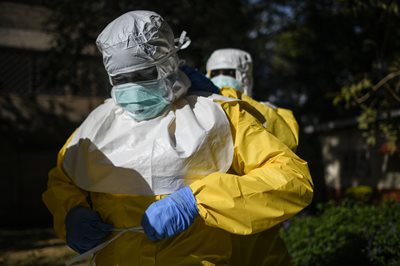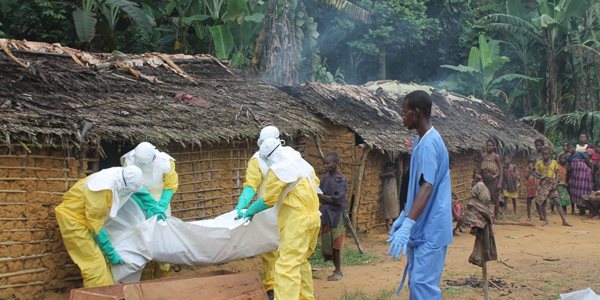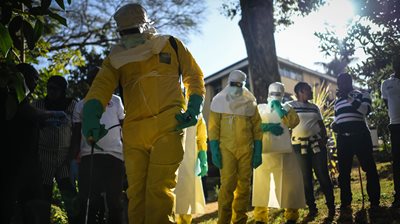In 2014, an outbreak of the Ebola Virus swept through West Africa. Before the World Heath Organization declared the epidemic had ended, over 11,000 people would die. Currently, the Democratic Republic of Congo is
experiencing an outbreak of the virus, that threatens to spread into neighbouring countries. When a person has died from Ebola, their body will be at its most contagious, putting those who are mourning the loss of a loved one in danger of becoming ill themselves.
Despite
tremendous efforts from healthcare providers, death is a natural and expected part of epidemics. But because of the infectious nature of this disease, this does leave a logistical issue – how do we bury the dead, someone’s loved one - in a way that is respectful but also protects against more people becoming ill?
At first glance, it might not seem like a complex issue, but there are many moving parts to providing safe and dignified burials. The Red Cross and Red Crescent works to provide appropriate burials and educate communities about why it is important.

Many people have religious and cultural practices surrounding death. In Canadian communities, a death often means a funeral home, a visitation, and frequently an open casket, so people who are grieving can pay their respects. These expectations help to shape our grieving process and provide a likely series of events that follow death.
To prevent further spread of the virus, the likely series of events in communities with Ebola outbreaks cannot proceed so simply. During an unsafe burial, there is a high risk of transmission, so educating communities about risks and the importance of safe burials is crucial to stopping the spread of the virus and saves lives.
This is why it is so critical to develop relationships in communities, and to rely on the strengths of local volunteers and staff members. Ebola carries a heavy stigma in communities who are faced with an outbreak - a familiar face, and an understanding of what cultural expectations are can go a long way during such a hard time.
Sometimes, this can include conversations with families that are not easy. Donatien Nzoti, a safe and dignified burial team leader,
recalled one case, “it took us two days to obtain the family’s consent. But this is part of our work and we have been trained for that. Our first goal is to make sure families understand the disease and the measures needed to protect themselves from infection.”
So, what is a safe and dignified burial? A safe and dignified burial is performed by a Red Cross team in a controlled way, that uses protective suits, gloves and goggles in order to protect against transmission. Just because it is a safe burial does not mean that loved ones aren’t included – family members or religious leaders can participate in various ways, and can observe the entire process, as long as they are properly dressed in protective gear. In these cases, it is often more accepted when the burial is being done with the help of someone who is local to the community, and so the Red Cross tries to keep these teams as representative as possible, with men and women from different ethnicities and religions.

Safe and dignified burials were a vital part of the West African Ebola response, and continue to be for the current outbreak, “they are hugely important” said Esmé Lanktree, Health Advisor for the Canadian Red Cross Health in Emergencies International Operations team, who spent time overseeing health teams during the Ebola response, “this saves thousands of lives”.
The Canadian Red Cross, with support from the Government of Canada, is developing a specialized type of public health emergency response unit that can be used during epidemics and pandemics where ensuring safe burials are necessary. This includes items like special kits and safety gear, as well as knowledgeable aid workers who are trained and ready to go when they are needed.

Recently, this support included a training that brought together representatives from Red Cross societies across Africa to train them to become safe and dignified burial coordinators. The people who participated in this training will be able to return home and share what they learned with their teams. This also means they are ready to respond to the current outbreak, and they will also be ready to respond to future outbreaks that may occur. One participant really valued “the experiences shared by people who were in the field. The role plays were very useful too.”
While death may be part of an epidemic, things like safe and dignified burials can help lessen the spread of the illness, in a compassionate way that respects those who are grieving the loss of someone they love.